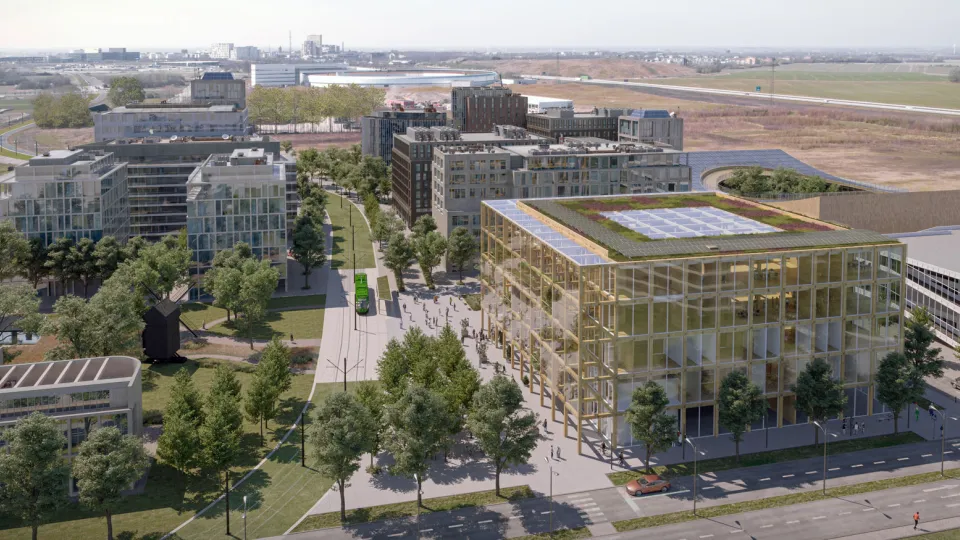The investigation into the university's future establishment in Science Village has continued during the spring. Based on board decisions made in December last year at LTH and the Faculty of Science, the project group has worked on producing a report on what is required to achieve critical mass in the area – in addition to the already decided establishment of NanoLab Science Village. On 18 and 19 June, an initial status update linked to the report was presented to both faculty boards.
Focus on the Profile Area Light and Materials
This spring's project work has been based on the board decision not to proceed with a joint establishment proposal for both the Department of Chemistry and the Department of Physics in Science Village. Instead, the project group has focused on the Profile Area ‘Light and Materials’, which sees several opportunities in establishing itself in Science Village. These advantages, but also the risks of an establishment, were analysed in a risk and impact analysis carried out by the Profile Area during the spring. The proximity to the MAX IV and ESS research facilities was highlighted as an important opportunity to create new synergies, strengthen international visibility and increase collaboration. The Profile Area also sees potential in bringing together:
• activities within semiconductors (materials and components)
• quantum physics and quantum technology
• expertise linked to the development and use of MAX IV
• and Lund's laser centre in the area.
A clearer presence in Science Village is also considered to contribute to strengthening and providing long-term support for the NanoLab project and LaserLab Science Village.
The Profile Area identifies three different scenarios from the Light and Materials that could constitute a critical mass. A relevant scope corresponds to a scenario that would mean that between 340 and 410 employees would be based in Science Village. It is proposed that undergraduate education should mainly remain at Sölvegatan, but with the possibility of locating certain student labs and advanced-level teaching elements in the new environment.
In its status update for the boards, the project group reviewed the work on the Light and Materials Profile Area, including both the advantages and disadvantages of establishing it. Among other things, the group emphasised the continued need to analyse the consequences for students' everyday lives, particularly in relation to dividing the programme between two geographically separate locations. Financially, a long-term sustainable model is required. If a proposal for ‘Light and Materials’ is developed, the floor space for the new building would correspond to approximately half of that planned for the co-location of the chemistry and physics departments in the area.
The project group also emphasised the importance of coordination between Stage 1 (NanoLab) and Stage 2 to ensure that both initiatives develop at the same pace.
The project group is also following the assignment given to Else Lytken, Head of the Department of Physics, earlier this spring by the Dean of the Faculty of Science and the Dean of LTH. The assignment involves investigating and further developing research and education in physics at Lund University – something that in turn affects the planning of a possible future establishment at another location. Else Lytken also provided a status update at the Faculty of Science Board meeting on 18 June and at the LTH Board meeting on 19 June. The final report is expected to be ready in December 2025.
What will happen in the autumn
After the early summer status report, the work will continue in the autumn with dialogue involving the relevant departments. An information meeting about the project group’s work is planned for September, where there will be an opportunity to ask questions. Invitations will be sent to those concerned. A decision on the direction of Stage 2 is expected to be made by the faculty boards in December 2025.
Read more about the decisions taken by the faculty boards in December 2024 on our internal website.



